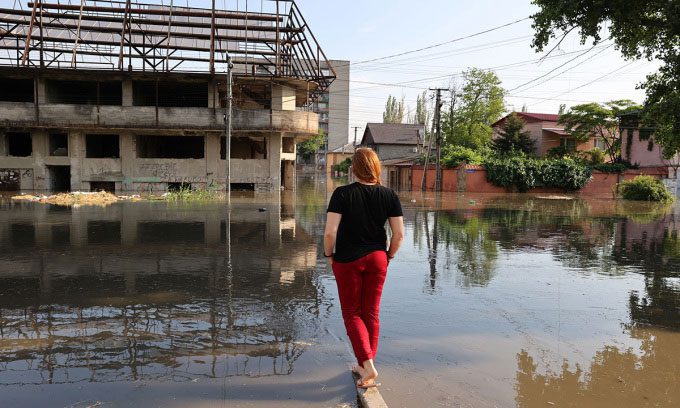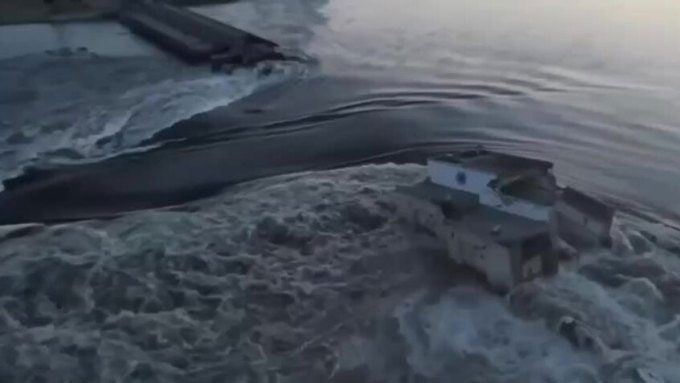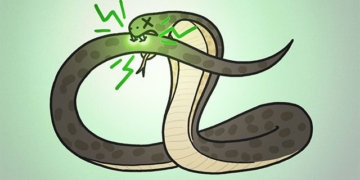Oil spills and other pollutants from the flooding caused by the Kakhovka Dam breach can harm both humans and wildlife.
An image reportedly showing the Kakhovka Hydroelectric Power Plant breach on the morning of June 6. (Video: Telegram/RVvoenkor).
The explosion that breached the Kakhovka Dam on the Dnieper River in Kherson province on June 6 resulted in a serious environmental disaster, disrupting the supply of fresh water and electricity for millions of people, flooding dozens of towns, and potentially leaving long-lasting consequences for southern Ukraine for decades, according to Bloomberg.
At least 150 tons of machine oil from the dam have spilled into the Dnieper River, with an additional 300 tons potentially leaking when the dam collapsed. “This is the largest man-made environmental disaster in Europe in decades,” stated Ukrainian President Volodymyr Zelenskiy on June 6. Russia and Ukraine are blaming each other at the United Nations for the dam breach.
In the first hours following the Kakhovka breach, millions of liters of water inundated at least 80 villages and towns, affecting around 10,000 residents. The floodwaters also entered the Lower Dnieper National Park. Oil spills and other contaminants that were previously at the bottom of the reservoir are now infiltrating these areas, posing risks to both humans and wildlife.

A woman observing the flooded road in Kherson after the Kakhovka Dam breach on June 6. (Photo: AFP/Getty)
The scale of the disaster is difficult to assess as water continues to spill from the reservoir, according to Anna Ackerman, a board member of the non-profit environmental organization Ecoaction in Ukraine. In the coming days, scientists and activists expect to gain a clearer picture as water levels stabilize and initial analyses reveal more details about the pollutants in the water.
“It can be said that all ecosystems and human settlements downstream of the Dnieper River will be affected. The habitats and protected species in several national parks along the river are in danger,” Ackerman stated on June 6.

The breach of the Kakhovka Dam. (Image taken from video).
The dam breach has exacerbated the environmental degradation in Ukraine since Russia launched its military campaign in February 2022. At least 1.24 million hectares of land in nature reserves were impacted by the conflict in the first year, according to a report by Greenpeace, including wildfires caused by missile strikes and soil and water pollution from toxic gases.
The flow of the Dnieper River has been disrupted for months as Russian armed forces captured the dam last year. Water levels have dropped by 2 meters, harming the flora and fauna in the floodplain. Greenpeace researchers noted that the sudden desiccation of these areas has resulted in mass deaths of mollusks, shrimp, and other local species.
While Ukrainian authorities are urgently evacuating residents, many volunteers are also working to rescue stranded animals. Activists from the organization UAnimals are rescuing dogs and cats and transporting them to vehicles. The Kazkova Dibrova Zoo in the town of Nova Kakhovka, located along the flood path, has been completely inundated. Out of the 260 animals in the zoo, only swans and ducks survived.



















































